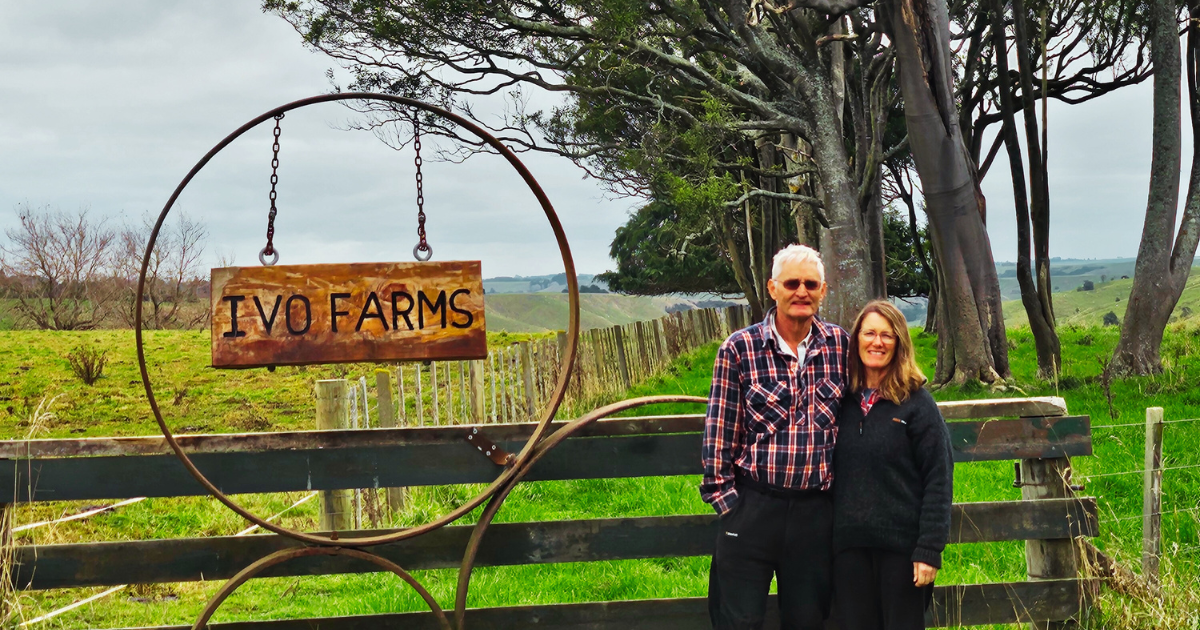Rooted in Resilience: Organic Innovation at IVO Farms
An Organic Shift in the Manawatū
Near Kimbolton in the Manawatū, Darryl and Debbie Coleman are proving that organic principles and smart technology can go hand in hand to create a resilient, profitable, and future-focused farming system.
After more than 30 years of conventional dairy farming, the couple transitioned their 245-hectare, 500-cow operation to certified organic, completing the three-year conversion process in January 2023.
Why Go Organic?
The decision to shift away from the conventional model was driven by a desire for a more adaptable farming system that included healthier soils and improved animal welfare. Influenced by leading soil scientists and on-farm research, the Colemans began to implement regenerative practices. Their changes included longer grazing rotations, diverse pasture species, and the use of biological fertilisers. These practices are now embedded across the property.
“Going organic was about building a system that’s more in tune with nature and less reliant on inputs,” says Darryl. “We wanted to create a farm that would still be thriving decades from now.”
Organic Certification and Global Opportunity
Certification through BioGro has opened up access to premium organic markets across the European Union, North America, Canada, China, Korea, and Taiwan. The Colemans supply Fonterra’s growing organic milk pool, which connects producers with global demand for traceable, high-welfare, sustainably produced dairy.
High-Tech Milking, Low-Stress Herd
A standout feature of the Colemans’ system is their integration of robotic milking technology. Positioned centrally on the farm, their robotic milking shed allows cows to voluntarily enter for milking, guided by automatic gates and a small feed reward of organic molasses. This has reduced walking distances and associated stress, significantly improving animal welfare.
The system generates continuous data on cow health, behaviour, and heat cycles, enabling more responsive and strategic herd management.
“We’re not spending less time on the farm,” Darryl explains, “but we are spending that time differently. The technology gives us insights we never had before, and that’s helping us make better decisions.”
Financial Results and Stable Output
The Colemans’ financial performance underscores the viability of their approach. Over the past two seasons, their operating expenses, before depreciation and debt servicing, were:
$3.84 and $3.69 per kgMS, respectively
This compares favourably with the Fonterra organic milk payout, which reached:
$10.80 and $10.92 per kgMS in the same period
Despite the widespread belief that converting to organic can cause production to drop by 10–20%, the Colemans report stable output through the transition.
Improvements in animal health have further strengthened the system. Reduced culling rates and improved reproductive performance have contributed to overall efficiency, with empty rates falling from 12% to 8%, a figure that matches or exceeds those reported by leading organic farming discussion groups.
Environmental Stewardship in Action
Environmental performance is a central focus at Ivo Farms. The couple actively track a range of indicators, including Fonterra’s calculations of purchased nitrogen, which were notably in the negative:
-113 in 2022/23
-108 in 2023/24
These figures reflect a closed-loop, biologically active system that is building fertility without synthetic inputs.
Greenhouse gas emissions were reported at:
6.5 kg CO₂e/kgMS in 2022/23
13.6 kg CO₂e/kgMS in 2023/24
These figures will continue to inform future changes to grazing and input strategies.
Worm counts across the farm have risen significantly year on year, and the Colemans are working with independent labs to monitor soil carbon and microbial activity as longer-term indicators of soil function and system health.
Biodiversity and Self-Sufficiency
The farm’s on-site nursery produces thousands of native trees and complementary fodder species each year, which are planted as shelterbelts, buffer zones, and internal corridors. These plantings:
Enhance biosecurity
Improve stock comfort
Provide vertical grazing opportunities in dry conditions
The farm is largely self-contained, with all young stock raised on-site, and in-house management of silage, pasture renewal, and general maintenance.
A small team of three full-time staff and part-time support manage operations, with a strong focus on collaboration and continuous learning.
“We’ve built a system that’s not just lower input, it’s higher intention,” says Darryl. “It’s about using the tools we have, whether they’re biological or digital, to create something that lasts.”
A Model for the Future
From market premiums and stable production to measurable environmental gains, the Colemans’ story offers a compelling example of how New Zealand dairy operations can thrive by embracing a regenerative organic model.
“We’re not claiming to have it all figured out,” Darryl reflects. “But I do think there’s something here for others to take away. Innovation doesn’t have to mean scaling up or adding more tech. Sometimes it’s just about being willing to shift your mindset and let nature lead a bit more. The rewards are real, and not just financial.”


